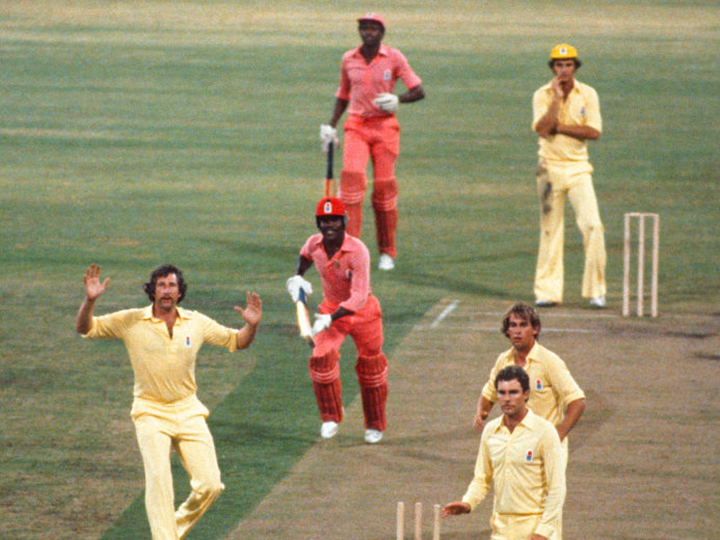Television arrived in Australia in 1956, just in time for the Melbourne Olympics.
On 16 September 1956 those fortunate to own a television tuned in to Australia's first television network, TCN-9. Others peered through shop windows to catch a glimpse of Bruce Gyngell as he came to life on the screen and said the historic words, 'Good evening, and welcome to television'. TCN-9, or the Nine Network as it became known, was owned by Sir Frank Packer, a longstanding client of Allen Allen & Hemsley. The changes Packer made to Australian cricket with Allens' help are still evident in the game today.
There was great excitement with the initial launch of television, but it was the introduction of colour images in 1975 that really brought the small screen to life. TCN-9 was by then led by Sir Frank's son Kerry who proved to be an aggressive businessperson like his father. Inspired by sports broadcasts in the United States, Kerry saw the potential for broadcasting cricket on colour television. In 1976 he approached the Australian Cricket Board with an offer to televise the 1977–1978 cricket season, famously using the line, 'There is a little bit of the whore in all of us, gentlemen. What is your price?' Despite offering $1.5 million – seven times the value of the existing contract with the Australian Broadcasting Commission – the Australian Cricket Board decided to stick by their handshake agreement with the Australian Broadcasting Commission and rejected his offer.

Packer was incensed and decided that if the Australian Cricket Board wouldn't let him play he would beat them at their own game.
In the 1970s tennis and golf players were generously rewarded for their efforts, while most cricketers earned barely enough to live on. It did not take much for Packer to convince the best players to join his teams. In secret, Packer signed players from across the globe and established his own cricket competition – World Series Cricket, dividing the international cricketing community and upending the economics and culture of the game. Allen Allen & Hemsley assisted with the contracts and also employed South African batsman Keppler Wessels for a period as a paralegal.
By the time World Series Cricket was launched, 35 leading international players had signed up. Allens advised Packer during the legal battles that followed. The biggest of these took place in the High Court in London when the International Cricket Council tried to prevent World Series Cricket players from participating in first-class cricket matches. Linklaters & Paines (now Linklaters) was engaged to advise on the English proceedings. Justice Slade ruled in favour of Packer, holding that the International Cricket Council's ban amounted to an unreasonable restraint of trade and an attempt to induce players to breach their contract with World Series Cricket.
Few spectators attended the first season of World Series Cricket but the following year, when the lights were turned on at the Sydney Cricket Ground for the first day-night match, the stands were filled with a near capacity crowd. Packer had brought fresh colour and life to the game and, after just two seasons, the Australian Cricket Board gave Packer his much sought after broadcasting rights and a contract to market and promote cricket in Australia. The changes he made are still evident in the game today.
